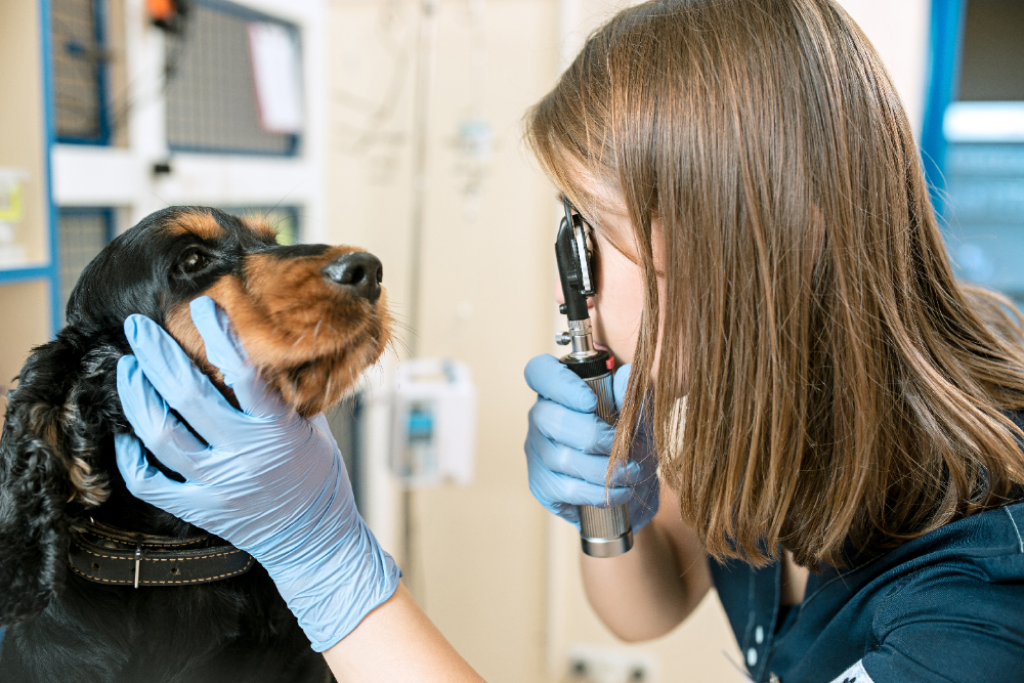What is Sebaceous Adenitis?
Sebaceous Adenitis is an inflammatory skin condition that affects the sebaceous glands which are responsible for producing the substance that keeps the skin supple and coat soft. It is unknown what causes Sebaceous Adenitis in dogs, but the inflammation of these glands lead to a poor coat, with issues including hair loss, dull, brittle hair, scaly skin, matted hair, and secondary infections.
There are two types of Sebaceous Adenitis in dogs; one that affects short-haired breeds, and one that affects long-haired breeds. Both have their own signs and symptoms, therefore it’s important to know and recognise the signs related to your dog’s breed and consult your veterinarian as soon as you notice symptoms present.
Which Breeds are at Risk of Sebaceous Adenitis?
Typically, Sebaceous Adenitis occurs in young to middle-aged dogs, both in short-haired breeds, and longer-haired breeds. But, some breeds are predisposed to the condition, including:
Standard Poodles
Akita
Samoyeds
Vizsla
What are the Symptoms of Sebaceous Adenitis in Dogs?
The signs and symptoms of Sebaceous Adenitis in dogs differ between short-haired breeds and long-haired breeds.
In Short Haired Breeds:
- Hair loss that is symmetrical from side to side on the body
- Dull, brittle textured hair
- While, non-flaky scales
- Small areas of matted hair
- Lesions that typically first start of top of the head and along the spine
In Long-Haired Breeds:
- Patchy hair loss
- Mild scales on the skin
- Follicular casting – the hair gets stuck together at the roots
- Lesions on the head, ear flaps, and torso
- Scarring may develop as a result of the condition
How Do We Diagnose Sebaceous Adenitis?
To diagnose Sebaceous Adenitis, we will first take a detailed medical history before performing a physical examination with a particular focus on areas where symptoms have presented. However, we cannot diagnose the condition with just a physical examination; a skin biopsy is the only way to definitively diagnose Sebaceous Adenitis.
You can learn more about skin biopsies and other diagnostic tests for pets in our recent blog that goes into more detail about cytology, histology, and the different samples we may take to gain a better understanding of what’s causing your pet’s problems.
How to Treat Sebaceous Adenitis in Dogs
Unfortunately, treatment of Sebaceous Adenitis can be challenging in dogs and often labour intensive for owners. In fact, symptoms can come and go independently of any treatment, making it a challenging condition to treat effectively.
That being said, common treatments for Sebaceous Adenitis may include:
- Antibiotics to treat any associated infections
- Medications that help to manage the attack of sebaceous glands from the immune system – ciclosporin
- Topical treatments are the main treatment – this helps to soothe sore, itchy, flaky skin and restore a healthy coat and oil balance.
- Supplementing essential fatty acids such as omega 3 and vitamin E.
Small Animal Dermatology Services at Knutsford Vets Surgery
At Knutsford Vets, we offer a range of veterinary dermatology services to help diagnose and treat your pet’s skin problems. If you’re concerned about your dog’s skin or coat, and have noticed some of the symptoms listed in this factsheet, get in touch with us as soon as possible and we’ll work with you to get to the root of the problem, before recommending a suitable care plan and tailored advice.








